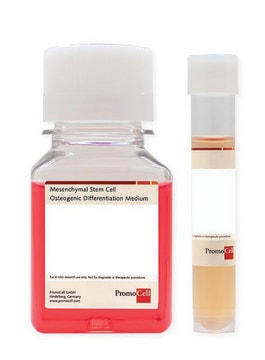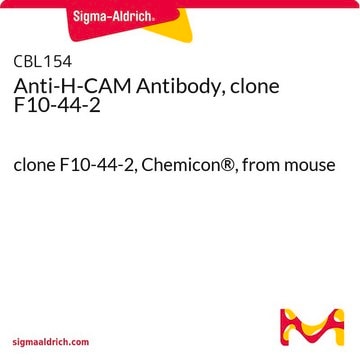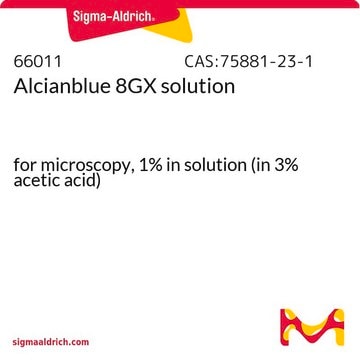There are no definitive references or citations confirming the light sensitivity of this material. However, this product is packaged in amber glass may be susceptible to light, particularly at UV wavelengths. In bright field microscopy slides must be viewed in subdued light. While this item is not tested for use in fluorescent, it has been used on Flow Cytometry and has an emission wavelength of approximately 600 nm. There are a number of publication indicating light sensitivity. See the link below to review on such example:
https://www.ncbi.nlm.nih.gov/pmc/articles/PMC5931440/
O1391
Oil Red O solution
0.5% in isopropanol
Synonyme(s) :
Solvent Red 27, Sudan Red 5B
About This Item
Produits recommandés
Forme
liquid
Concentration
0.5% in isopropanol
Technique(s)
microbe id | staining: suitable
Couleur
dark red
εmax
0.20-0.50 at 510-517 nm
Application(s)
diagnostic assay manufacturing
hematology
histology
Température de stockage
room temp
Chaîne SMILES
N(\N=C3\c4c(cccc4)C=CC\3=O)c1c(cc(c(c1)C)N=Nc2c(ccc(c2)C)C)C
InChI
1S/C26H24N4O/c1-16-9-10-17(2)22(13-16)27-28-23-14-19(4)24(15-18(23)3)29-30-26-21-8-6-5-7-20(21)11-12-25(26)31/h5-15,29H,1-4H3/b28-27?,30-26-
Clé InChI
HJAYEODIXUYVIC-LTFAAIOASA-N
Vous recherchez des produits similaires ? Visite Guide de comparaison des produits
Catégories apparentées
Description générale
Application
Mention d'avertissement
Danger
Mentions de danger
Conseils de prudence
Classification des risques
Eye Irrit. 2 - Flam. Liq. 2 - STOT SE 3
Organes cibles
Central nervous system
Code de la classe de stockage
3 - Flammable liquids
Classe de danger pour l'eau (WGK)
WGK 2
Point d'éclair (°F)
53.6 °F - closed cup
Point d'éclair (°C)
12.0 °C - closed cup
Faites votre choix parmi les versions les plus récentes :
Certificats d'analyse (COA)
Vous ne trouvez pas la bonne version ?
Si vous avez besoin d'une version particulière, vous pouvez rechercher un certificat spécifique par le numéro de lot.
Déjà en possession de ce produit ?
Retrouvez la documentation relative aux produits que vous avez récemment achetés dans la Bibliothèque de documents.
Les clients ont également consulté
Articles
Development of a novel serum-free and xeno-free human mesenchymal stem cell (MSC) osteocyte differentiation media.
PLTMax® Human Platelet Lysate (hPL) is a superior serum-free and xeno-free media supplement alternative to fetal bovine serum (FBS) for human mesenchymal stem cell (MSC) cultures.
Frequently asked questions about mesenchymal stem cells including MSC derivation, expansion, differentiation and allogenic stem cell therapy.
Protocoles
Osteogenesis, adipogenesis and chondrogenesis differentiation protocols and media for human mesenchymal stem cell culture. Explore over 350 PromoCell products on our company website.
Information about mesenchyme, specifically mesenchymal stem cell procotols. Step-by-step cell culture protocols for mesenchymal stem cell (MSC) isolation, expansion and differentiation.
-
Hi! I'm wondering if OilRedO is light sensitive? Does the incubation need to take place in the dark? And could the staining of cells be compromized if the solution is not kept dark?
1 answer-
Helpful?
-
-
What are the differences between Oil Red O solution O1391 and OIL RED O staining solution 1.02419?
1 answer-
There are not many differences between products O1391 and 102419. O1391 is available in 250 mL and 500 mL bottles, while 102419 is available only in a 250 ml bottle. The only practical difference between the two products is the solvents used to dissolve the Oil Red O. For O1391, the solvent used is isopropyl alcohol, while the solvents used for 102419 are acetone and ethyl alcohol. Both products use Oil Red O as the dye, and the directions for use call for diluting the product with water prior to use and then filtering. The results should be identical since both products use Oil Red O as the dye.
Helpful?
-
-
Should cells or tissues be fixed before staining with Oil Red O for fats or lipids?
1 answer-
Yes, cells or tissues need to be fixed before staining with Oil Red O. It is important to avoid using fixatives that contain alcohol. Oil Red O staining can be performed on cultured cells and fresh frozen tissue. However, tissues should not be paraffin embedded and exposed to the alcohols and solvents necessary for paraffin processing tissue.
Helpful?
-
-
Hi I purchased Oil Red O solution – 0.5% in isopropanol, 01391 250mL, PCode-1003585017, Source, SLCP2956 for staining of whole mice aorta. I want to dilute it to 0.16% solution. What solution should I use for dilution? MilliQ water/methanol/isopropanol?
1 answer-
This product can be further diluted using distilled water or aqueous buffer to reach the desired concentration. Note that solution diluted with water or aqueous buffers are less stable and should not be stored for extended periods.
Helpful?
-
-
Can I use this solution for stain frozen sections ? I thought that I bought oil red in propylene glycol. What is the difference ?
1 answer-
This O1391 is a 0.5% solution in isopropanol. Product O1516 is a 0.5% solution in propylene glycol. The protocol for either product is the same. There is some evidence in the literature that the propylene glycol solution performs better on PFPP samples, however this is not definitive and may depend on conditions and technique. Each is considered a stock concentration. Stock solutions can range from 0.2 - 0.5%. Depending on the specific application the stock solution will need to be further diluted by 40 - 60%. For example, in staining frozen sections, 30ml of the O1391 would be diluted with 20ml of distilled water to reach a working concentration. Note that solution diluted with water or aqueous buffers are less stable and should not be stored for extended periods.
Please see the link below to review and article that may be helpful:
https://www.ncbi.nlm.nih.gov/pmc/articles/PMC3449473/pdf/10616_2004_Article_3903.pdfHelpful?
-
-
How do you prepare the working solution using this reagent? or is it already a prepared working solution?
1 answer-
This product is a 0.5% solution in isopropanol and is considered a stock concentration. Stock solution can range from 0.2 - 0.5%. Depending on the specific application the stock solution will need to be further diluted by 40 - 60%. For example, in staining frozen sections, 30ml of the O1391 would be diluted with 20ml of distilled water to reach a working concentration. Note that solution diluted with water or aqueous buffers are less stable and should not be stored for extended periods.
Helpful?
-
Active Filters
Notre équipe de scientifiques dispose d'une expérience dans tous les secteurs de la recherche, notamment en sciences de la vie, science des matériaux, synthèse chimique, chromatographie, analyse et dans de nombreux autres domaines..
Contacter notre Service technique












